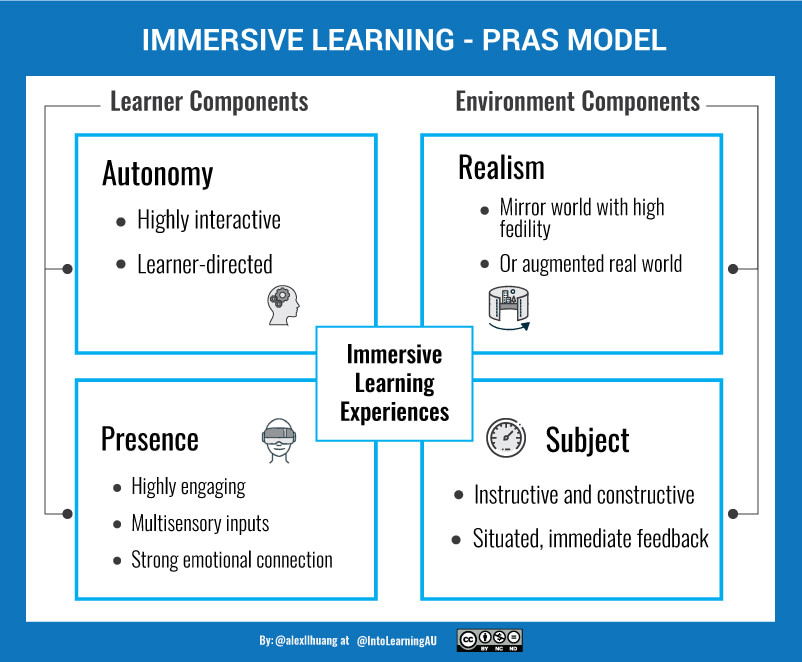
Background
To explore the field of immersive learning, we first need to understand what it is. We started this journey by looking into the existing literatures. For example, we listed four representative ones from various sources.
Immersive learning places individuals in an interactive learning environment, either physically or virtually, to replicate possible scenarios or teach particular skills or techniques.
The use of virtual worlds, with text-based, voice-based and a feeling of ‘presence’ naturally is allowing for more complex social interactions and designed learning experiences and role plays, as well as encouraging learner empowerment through increased interactivity
Immersive in the sense that I am ‘in’ the learning experience and I am practicing doing the things that I need to do better … I am practicing and I am getting real-time feedback and I am getting better
Immersive learning simulations … allow learners to not only see information as text or pictures on a screen or book, but the ability to manipulate and interact in their learning environment in an entirely new way.
The Model
Based on reviewing the literatures and distilling the essentials, we constructed a simplified model of immersive learning, which includes four key components from both the learner and learning environment’s perspective.

Specifically, autonomy and presence are two key elements for the leaners in any immersive learning experiences. On the other hand, the learning enviornment includes, at a minimal, two dimensions on realism and learning subject.
To further clarify this model, we will use a concrete example based on our experience on running immersive learning workshop on geography.
An Example
We have designed and run incursion workshops with Google Earth VR. It is a great tool to deliver immersive learning on geography for senior primary and scendary students.

Learner’s perspective
Autonomy
- Change the time of day
- Zoom in and out at different geographic scales
- Navigate by physically or virtually walk or flying around
- Tilt up and down the landscape
- Select and immerse in 360 street view photos when available
- and much more …

Presence
Learning Environment's Perspective
Realism
- Lowest level: similar as 2D maps experienced in 3D environment. For example, buildings and mountains are represented as 2D shapes.
- Mid-level: there are places reconstructed as 3D models with high fidelity where students can navigate around
- Real-world level: 360 degree photos of the street-view when available

Learning Subject
Summary
Therefore, it is, we believe, a good time to revisit and invite immersive learning back to the stage, to get the attention it deserves.
Afterall, no matter what approaches or tools we use, the ultimate goal is to serve our children and younger generations, to equip and empower them with the best opportunities to build a bright future.
If immersive learning can contribute to this aim, why not give it a shot?


